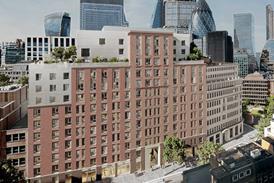What the withdrawal of Stockport means for the Greater Manchester Spatial Framework

Just over two years ago we were commissioned to do a piece of work on the Greater Manchester Spatial Framework. Our brief was to pull together all the really good stuff in the plan, the bits that most people never looked at, and to weave them together into an elevator pitch – a coherent narrative that could be explained in five minutes (it was either a slow elevator or a very tall building).
One of our early ideas was the “octopus of accessibility”. Greater Manchester is made up of two cities and eight towns and most of the new housing is proposed within a 10-minute walk of the transit corridors to the eight towns. The idea never quite gained traction, not least because the octopus is generally regarded quite negatively when used in cartography. It’s just as well, because the octopus would have lost a leg with the withdrawal of Stockport from the process just before Christmas.
At an extraordinary council meeting on December 3, described in the Manchester Evening News as “often bitter… full of political potshots, circular arguments and accusations of hypocrisy”, Conservative and Lib Dem Stockport councillors voted to pull out of the spatial framework.
They were concerned about a number of green belt sites, even though the sites in question covered just 1.2% of Stockport’s green belt, a reduction of more than 80% compared to the first draft of the plan. What is more, the framework had allowed Stockport to reduce its housing figures by 25% (5,000 homes) by redistributing them to other parts of the conurbation. Stockport will therefore now need to find land for these extra homes and has three years to produce its own plan which, given the politics of the district, isn’t going to be easy.
Meanwhile the remaining seven towns and two cities are meeting this week to decide what to do. The likelihood is they will forge ahead, but it is going to involve a lot of rewriting. I can’t help thinking that this is no way to do strategic planning. Despite the valiant work of the planners in the combined authority, the whole thing has become a politicised numbers game and most of the debate has focused on a few green belt sites that are actually largely irrelevant to the big picture.
Part of this big picture is the fact that Manchester and Salford are presently the fastest-growing cities in the UK (covid notwithstanding). Given their history of massive population loss in the latter part of the 20th century, our view was that this current growth spurt is something to be encouraged. We compared Greater Manchester to Greater London which covers a similar land area. But Greater Manchester has 2.8 million people while Greater London is just shy of nine million. There should be no lack of space in Greater Manchester. It is just that huge areas are covered by green belt, a legacy of the 1980s structure plan which was drawn up at a time when the conurbation was in a state of near collapse.
Just as Rasmussen called London a “city of villages”, our other big idea was that Greater Manchester is a “city of towns”. In addition to the eight large towns, it has almost 60 smaller towns each with a distinct identity. This comes from the Industrial Revolution when Manchester was the trading centre, and Salford the port, surrounded by a great halo of manufacturing towns. Currently all the growth is taking place in the core and the pressured south (like Stockport). The aim of the plan is to spread this growth to the six northern towns to create a poly-centric city of towns.
This message is, however, drowned out by all the noise about housing numbers and the 10% of housing planned for the green belt. People have celebrated the reduction in planned homes from 220,000 to 180,000 and the commensurate reduction in green belt loss.
But there is a bigger picture here! In our work we also compared Manchester to its European peers like Barcelona, Hamburg, Lyon and Rotterdam. It currently falls short of these cities not just in terms of population, but GVA (gross value added) and measures of completeness. To close this gap we need a plan with vision, not one which is at the whim of the politics of the Nimby.
















1 Readers' comment